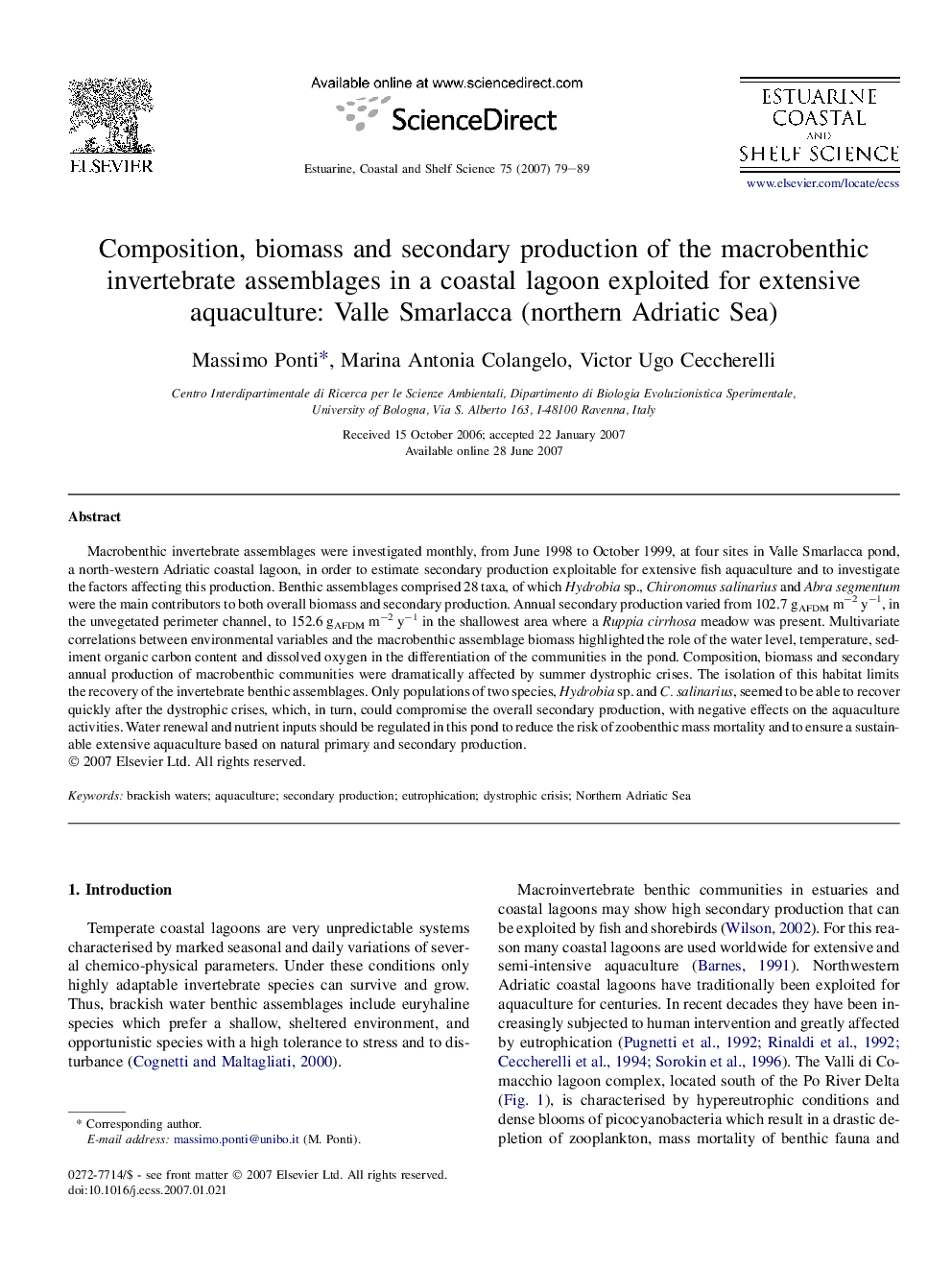| کد مقاله | کد نشریه | سال انتشار | مقاله انگلیسی | نسخه تمام متن |
|---|---|---|---|---|
| 4541723 | 1626701 | 2007 | 11 صفحه PDF | دانلود رایگان |

Macrobenthic invertebrate assemblages were investigated monthly, from June 1998 to October 1999, at four sites in Valle Smarlacca pond, a north-western Adriatic coastal lagoon, in order to estimate secondary production exploitable for extensive fish aquaculture and to investigate the factors affecting this production. Benthic assemblages comprised 28 taxa, of which Hydrobia sp., Chironomus salinarius and Abra segmentum were the main contributors to both overall biomass and secondary production. Annual secondary production varied from 102.7 gAFDM m−2 y−1, in the unvegetated perimeter channel, to 152.6 gAFDM m−2 y−1 in the shallowest area where a Ruppia cirrhosa meadow was present. Multivariate correlations between environmental variables and the macrobenthic assemblage biomass highlighted the role of the water level, temperature, sediment organic carbon content and dissolved oxygen in the differentiation of the communities in the pond. Composition, biomass and secondary annual production of macrobenthic communities were dramatically affected by summer dystrophic crises. The isolation of this habitat limits the recovery of the invertebrate benthic assemblages. Only populations of two species, Hydrobia sp. and C. salinarius, seemed to be able to recover quickly after the dystrophic crises, which, in turn, could compromise the overall secondary production, with negative effects on the aquaculture activities. Water renewal and nutrient inputs should be regulated in this pond to reduce the risk of zoobenthic mass mortality and to ensure a sustainable extensive aquaculture based on natural primary and secondary production.
Journal: Estuarine, Coastal and Shelf Science - Volume 75, Issues 1–2, October 2007, Pages 79–89